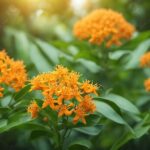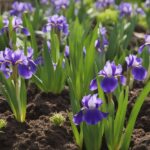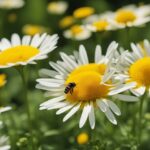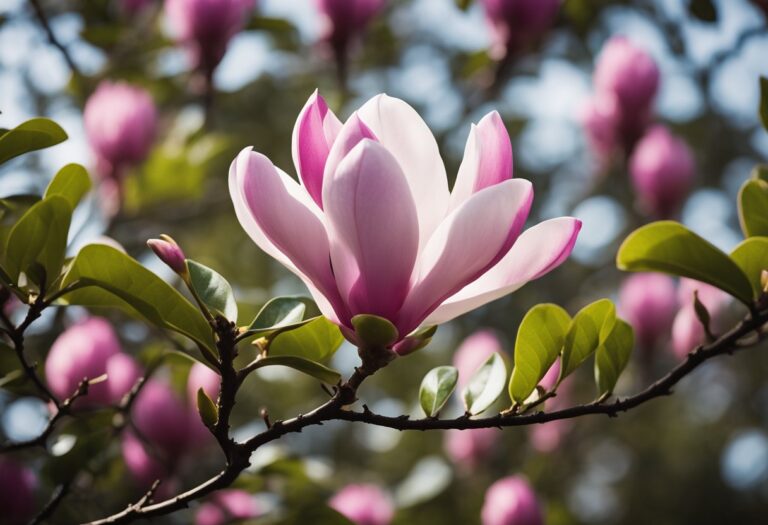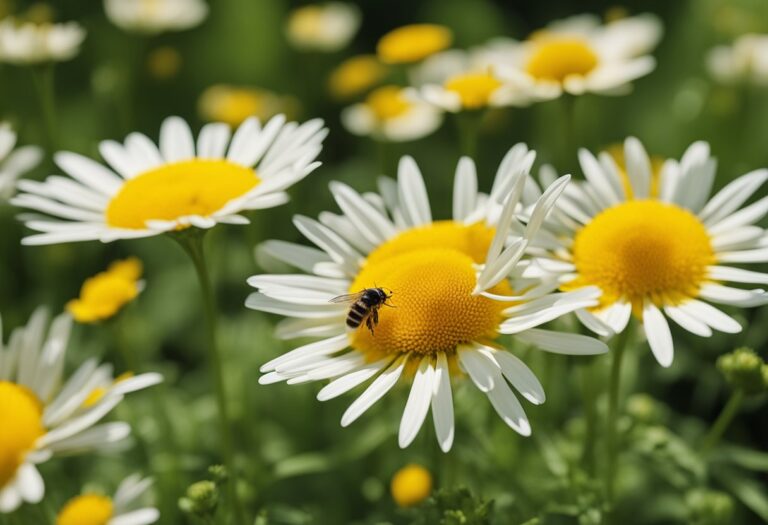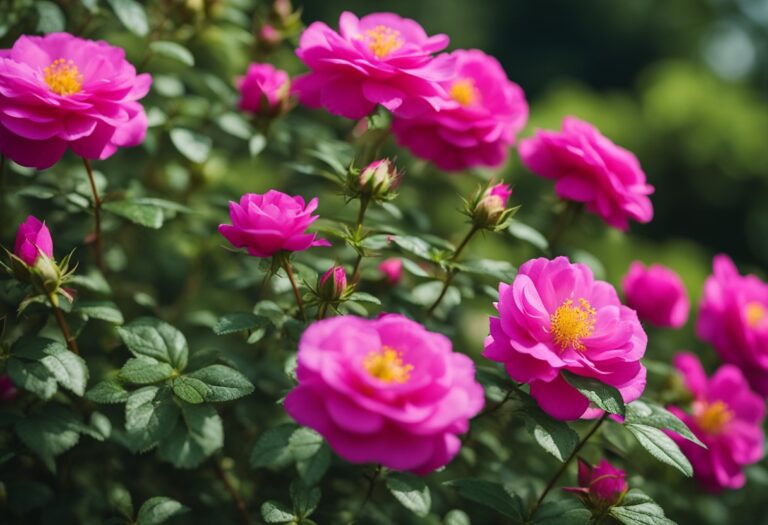Botanical Profile of Wild Quinine
Parthenium integrifolium, also known as Wild Quinine or American Feverfew, is a perennial native to North America. It’s known for its utility and historical value in herbal medicine, and here’s what you should know about its botanical characteristics:
- Growth Habit: Wild Quinine forms clumps and can reach 3 to 4 feet. It has an upright stature with a sturdy, robust form.
- Leaves: The leaves are coarse, broadly ovate to lanceolate, and may be toothed or entire. They are typically covered in fine hairs giving them a slightly rough texture.
| Stage | Description |
|---|---|
| Flowering | Late spring to late summer |
| Seed Heads | Brown in late fall, remain decorative |
- Flowers: The plant displays broad, flat-topped clusters of tiny, woolly-looking white flower heads. Each flower head includes five ray flowers, which are small but visually striking. These flowers can last through extreme weather without withering quickly.
- Habitat: It thrives in dry soils and is commonly found in prairies, glades, and rocky woods. Its preference for tough, somewhat heavy soil types showcases its hardiness.
Noteworthy Interactions:
- Pollinators: Various insects, like beetles and bees, are attracted to Wild Quinine. Beetles preferentially consume the pollen, whereas bees are more drawn to the nectar.
- Garden Utility: Besides its beauty and attractiveness to pollinators, its resilience to weather extremes makes it a valuable addition to garden settings. It requires full sun and moist soil conditions for optimal growth.
Medicinal Properties and Uses
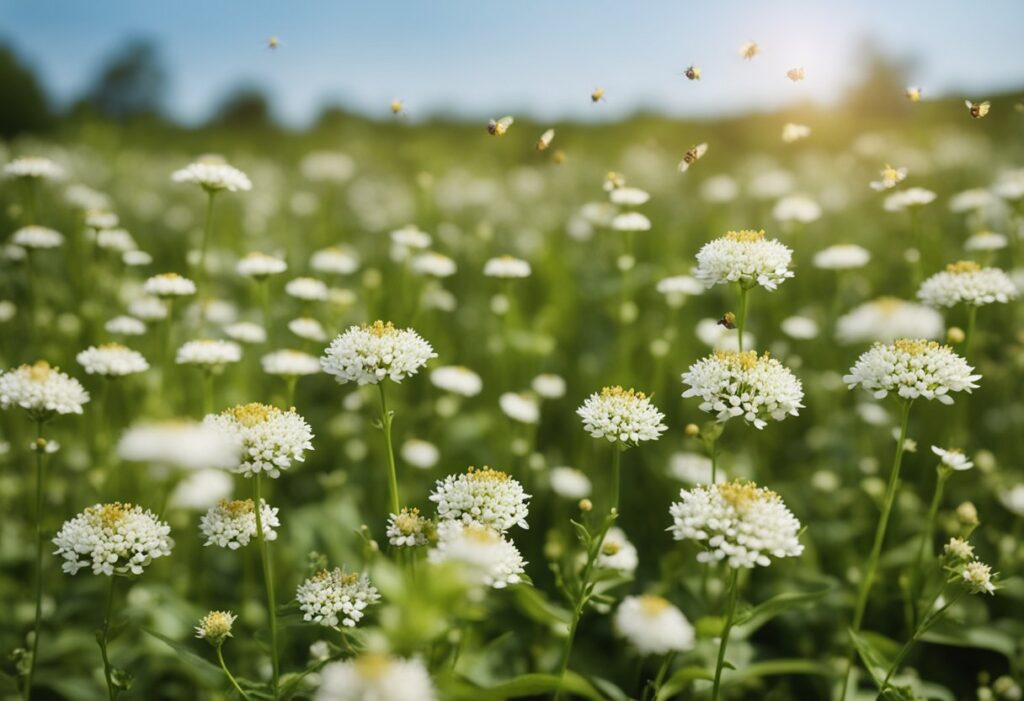
Wild Quinine (Parthenium integrifolium) has been traditionally used for its medicinal properties. Its applications span immune system support, skin and wound healing, and anti-inflammatory effects.
Immune System Support
Wild quinone may benefit your immune system. Due to its quinine-like effects, the root and flowering tops have historically been used to treat conditions like malaria.
Skin and Wound Healing
Wild Quinine can aid in skin healing. A poultice made from fresh leaves has been applied to burns and wounds to promote healing.
Anti-inflammatory Effects
You can utilize Wild Quinine for its anti-inflammatory properties. The root has been used to reduce inflammation, particularly in the urinary passages and kidneys.
Cultivation and Harvesting

Wild Quinine, Parthenium integrifolium, is a hardy perennial suited to various garden settings. Your success in cultivating this plant hinges on replicating its native habitat conditions as closely as possible.
Soil and Site Selection:
- Soil: Well-drained
- pH: Neutral to slightly acidic
- Sunlight: Full sun to partial shade
- Hardiness Zones: 3-8
Begin by selecting a well-drained area with full sun to partial shade exposure. Wild Quinine is adaptable to a range of soil conditions but prefers a neutral to slightly acidic pH. It flourishes in hardiness zones 3 through 8.
Planting:
- Sow seeds directly in fall or stratify them for 30 days for spring planting.
- Plant seeds or root divisions 1 to 2 feet apart to accommodate growth.
- Water thoroughly after planting.
Planting can be done using seeds or root divisions. Consider a moist stratification period of about 30 days if starting with seeds to improve germination rates. Sowing directly in fall allows the cold season to naturally stratify the seeds. Space plants or seeds 1 to 2 feet apart.
Maintenance:
- Watering: Moderate; drought-tolerant once established.
- Fertilizing: Minimal; too much fertilizer can reduce blooming.
- Pruning: Deadhead to encourage more blooms and prevent self-seeding.
Wild Quinine requires moderate watering, especially during dry spells, until it becomes established. Once mature, the plant is notably drought-tolerant. Minimal fertilization is necessary, and over-fertilizing should be avoided to prevent lush foliage at the expense of blooms. Deadheading spent flowers will promote further blooming and can help control spreading if you wish to prevent self-seeding.
Harvesting: Harvest flower clusters from late spring through summer when they are in full bloom for cut flowers or medicinal uses. Cutting flowers also contributes to plant health and encourages additional blooming.
Conservation and Ethical Sourcing
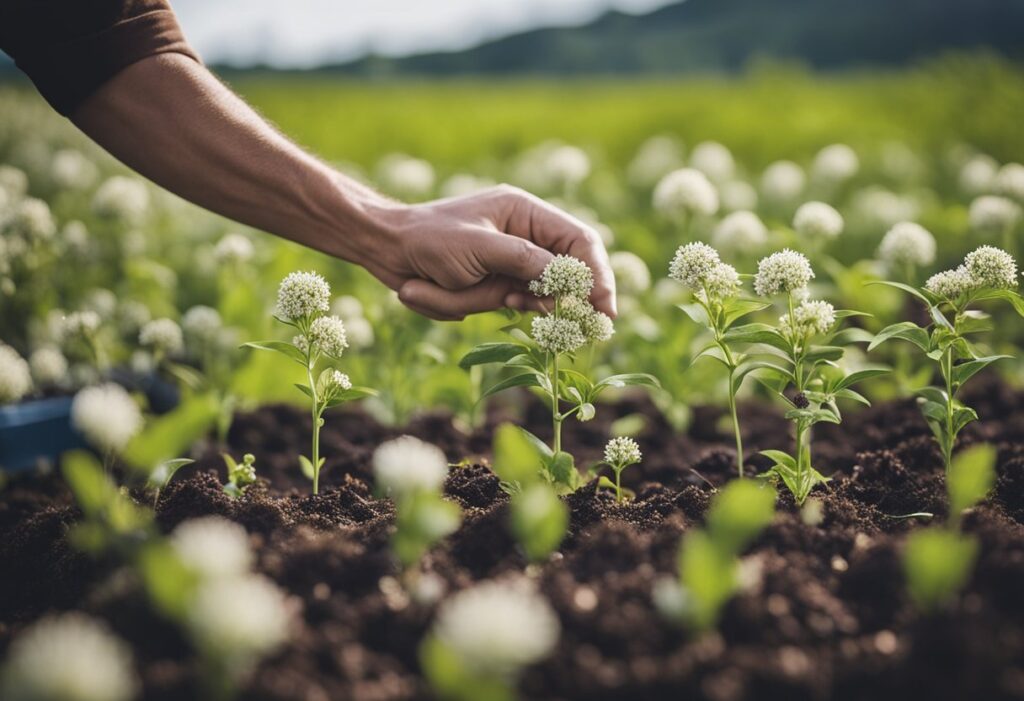
When you consider incorporating Wild Quinine (Parthenium integrifolium) into your garden or production, it’s crucial to prioritize conservation and ethical sourcing practices. This plant, while not currently listed as endangered, can be affected by overharvesting and habitat destruction. Therefore, it’s essential to source your plants from reputable nurseries that ensure their stock is cultivated responsibly.
Where to Source:
- Certified Nurseries: Opt for nurseries certified in native plant cultivation to ensure the plants are not wild-harvested.
- Local Ecotype Providers: Seek providers who grow plants from seeds collected locally, supporting genetic diversity.
Cultivation Tips:
- Propagation: Propagate from seed or division to avoid overharvesting natural populations.
- Garden Setting: Plant in appropriate garden settings that mirror its natural habitat, promoting healthy growth.
Benefits of Ethical Sourcing:
- Supports Ecosystems: Ethical sourcing helps maintain native insect populations dependent on Wild Quinine.
- Preserves Genetics: It conserves the genetic variation inherent to local Wild Quinine populations.
Frequently Asked Questions
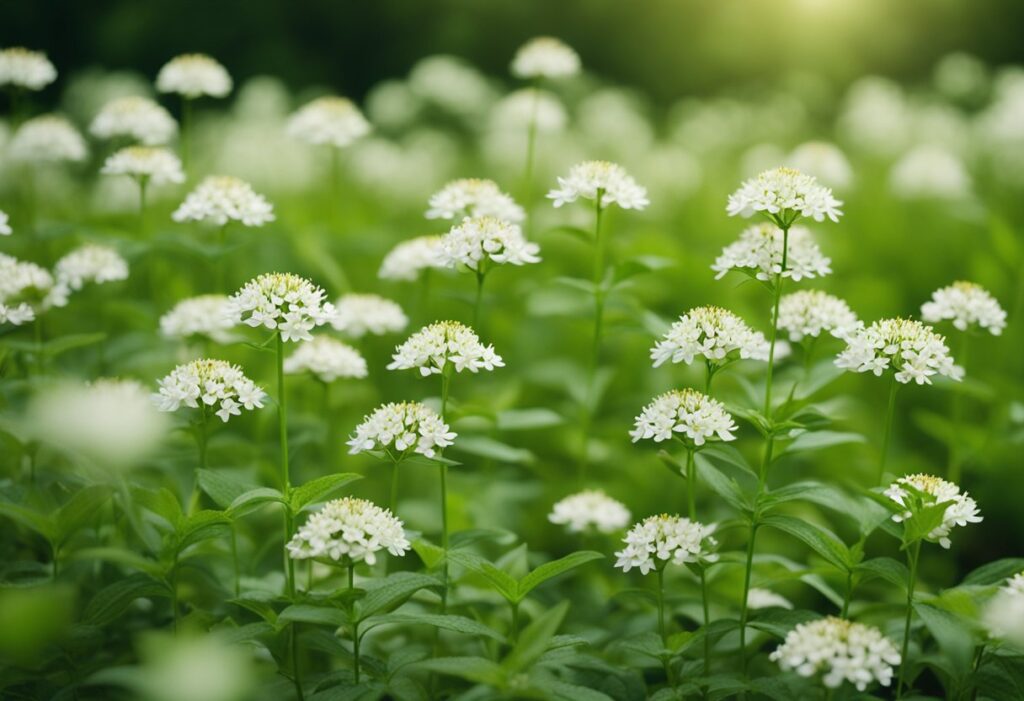
In this section, you’ll find concise answers to common inquiries about Wild Quinine (Parthenium integrifolium), detailing its medicinal applications, cultivation advice, and general botanical information.
What are the medicinal uses of Wild Quinine?
Historically, Wild Quinine has been used for its purported medicinal properties, especially for treating fevers and as an immune system stimulant. However, it’s important to consult a healthcare provider before using it for medicinal purposes.
How do you care for a Parthenium Integrifolium plant?
Wild Quinine is a hardy plant that requires minimal care once established. Plant it in well-draining soil, water it regularly until it’s established, and then you can reduce watering as it tolerates drought well. It performs best in full sun to partial shade.
Where can I buy Wild Quinine seeds or plants?
You can purchase Wild Quinine seeds or plants from native plant nurseries, garden centers, or online stores specialising in native or medicinal plants.
Can Wild Quinine thrive in both sun and shade environments?
Wild Quinine grows optimally in full sun but can also tolerate partial shade. However, too much shade might result in less vigorous growth and fewer blooms.
What is the typical height that Wild Quinine reaches when fully grown?
When fully grown, Wild Quinine typically reaches a height of 2 to 4 feet, making it suitable for a garden bed’s middle or back border.
Is Wild Quinine considered an invasive species?
Wild Quinine is native to the Eastern United States and is not considered invasive. Instead, it is a beneficial plant. It supports local ecosystems, particularly pollinators like bees and butterflies.

